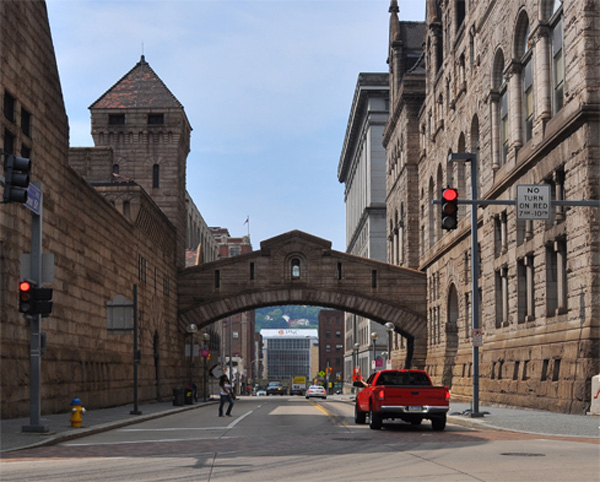Not Mister Rogers' neighborhood
Nov 28, 2009
Jack Delano's 1940 photo of Pittsburgh has a cinematic feel to it, as the lady on the staircase descends into a dark and cold and spectacular kind of hell. That particular hell--with sulfurous fumes belching from roaring steel mills--went south a generation ago, abandoning western Pennsylvania to rust and poverty. Somewhat remarkably, the city has stirred from its decline and reinvented itself as a clean and shiny, almost high-tech sort of place. But all along, the sons and daughters of Pittsburgh have been growing up into American image-makers, people who have shown us what we look like, or would like to look like, or hope to God we never ever look like. Fred Rogers, with his sweater and sneakers and perfectly detailed little world of children's TV--wasn't Pittsburgh's first or last cultural chronicler.
Early on, there was Stephen Foster, of Swannee River and Camptown Races fame, and then the painter Mary Cassatt, the modernist Gertrude Stein, and the Tarzan, Johnny Weissmuller. Some of the Pittsburghers have worked right up to the cultural edge--Andy Warhol--and some have walked us up to the brink, where we could glimpse a frightening future--Rachel Carson.
Most notable, perhaps, were all the guys who played football, generation upon generation of Pittsburghers who were big and tough and fast and focused: Johnny Unitas, Joe Namath, Mike Ditka, Larry Brown, Nick Saban, and way too many others
Then there were those who worked the cultural currents of the times: e.g., Bobby Vinton, Lou Christie, Charles Bronson. And the ones who have risen above their times, soaring elegantly: Gene Kelly.
But who took the neighborhood in this picture and warped it into a dark corner of the American consciousness? Back in the early days of television, Fred Rogers hired an imaginative young assistant who moved on to Hollywood and directorial fame and fortune--guy by the name of George Romero--whose first big hit opened a seam of movie-dom that has been dug ever deeper to this day: Night of the Living Dead.
And for what it's worth, Pittsburgh still has more than 700 staircases officially registered as city streets.


